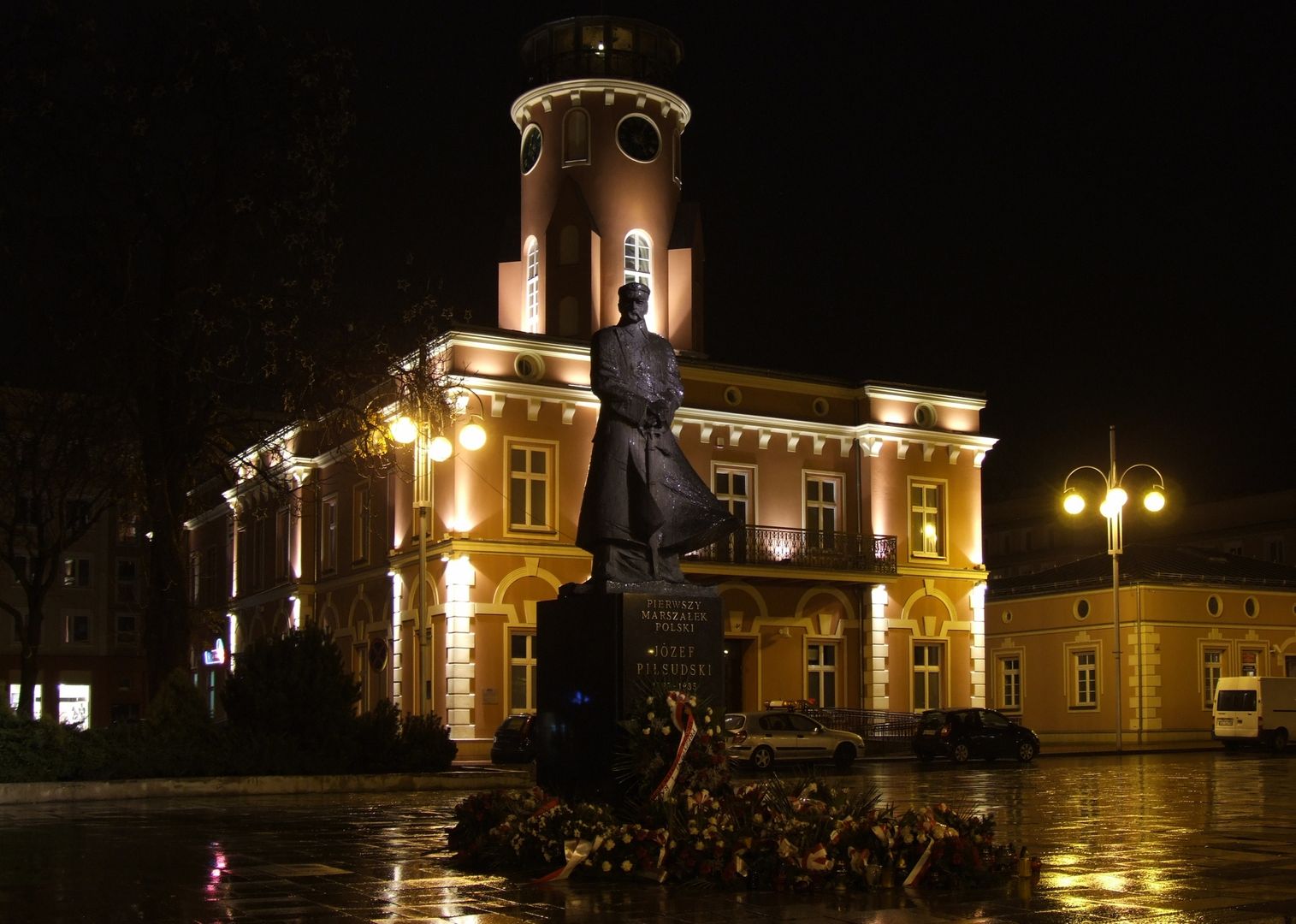Częstochowa City Hall
6.77

Overview
The Częstochowa City Hall, located at Władysław Biegański Square, is an important historical and architectural landmark of the city. Initially, there were two separate towns – Old and New Częstochowa, each with its own town hall, both of which were destroyed during the Napoleonic Wars and the Bar Confederation. The current building, designed by Franciszek Reinstein, was constructed between 1828 and 1836 after the towns were merged. Very quickly, the ground floor of the town hall was used for office purposes, while the upper floor was designated as housing for officials. In 1841, it was enclosed with a wall-mounted fence. Its architecture is characterized by a late classicist style, originally designed on a square plan with side pavilions. In 1854, on the occasion of the emperor's visit, the façade was renovated, and in 1908 the building was reconstructed into an elongated rectangle with risalits and a round tower. The entire structure was crowned with a terraced roof featuring clocks. After being repurposed in 1959, the building was handed over for museum use, which influenced its further development as a cultural venue. In 1967, the town hall and the adjacent guardhouse became the seat of the Częstochowa Museum. A general renovation of the building complex, which began in 2004, lasted two years and contributed to adapting the town hall to the needs of people with disabilities and improving its external aesthetics. In 2006, the building was reopened, with its historic cellars and staircases exposed, and a viewing point on the tower. The town hall was entered into the register of monuments in 1960, which reflects its significance for local culture and history. Today, the Częstochowa City Hall is not only an administrative site but also an important point on the city's cultural map, attracting both tourists and residents.
Location
City
Częstochowa
Tertiary Administrative Division
Mykanów
County
Częstochowa County
State
Silesian Voivodeship
Country
Tickets
Powered by GetYourGuide
2025 Wizytor | All Rights Reserved